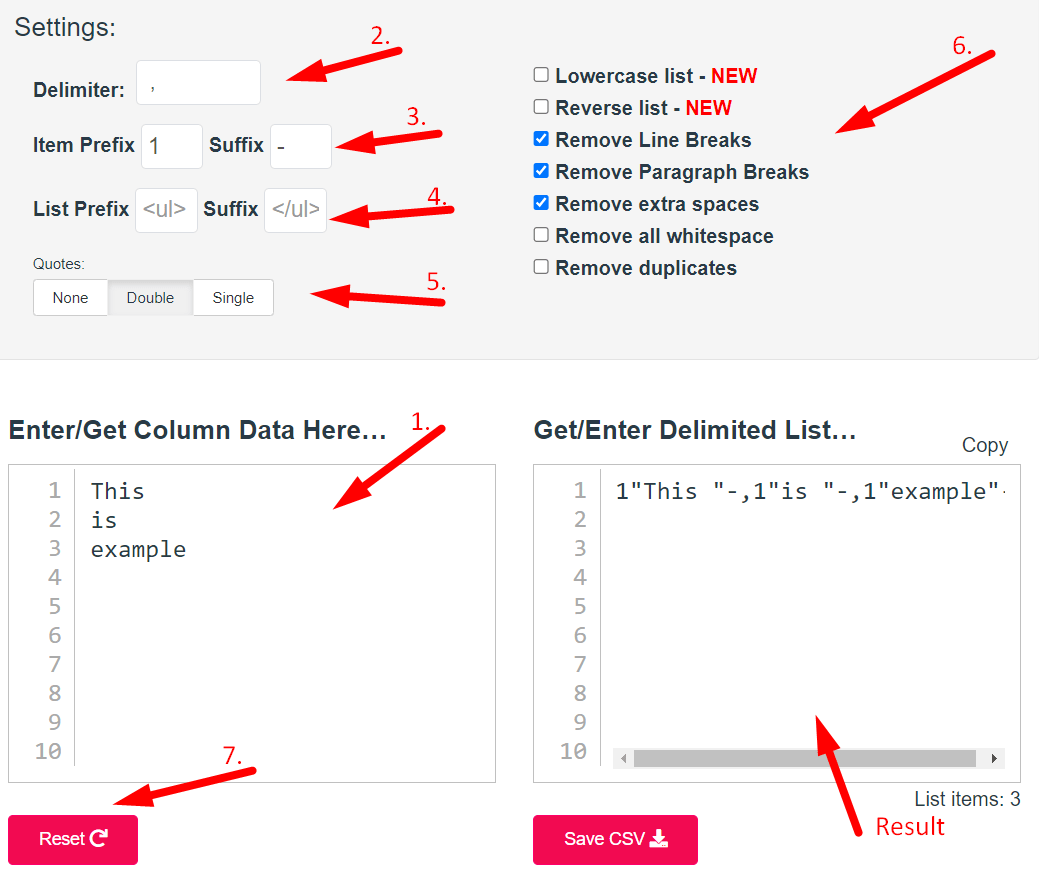 Comma Separator
Comma Separator
Instantly convert Column to Comma Separated List to CSV. Copy/paste a list from Excel to convert columns to comma-delimited values. Save settings & auto-copy results.
Settings:
Delimiter:
Item Prefix
Suffix
List Prefix
Suffix
Lowercase list - NEW
Reverse list - NEW
Remove Line Breaks
Remove Paragraph Breaks
Remove extra spaces
Remove all whitespace
Remove duplicates
Enter/Get Column Data Here…
1
2
3
4
5
6
7
8
9
10
11
How to use this Comma Separator Tool?
If you're looking for an online tool to add commas as separators to numbers, there are several available. Here's one example:
- Comma Separator Tool by Yttags.com:
- Website: Comma Separator Tool
- This tool allows you to enter a number and instantly see the same number formatted with commas as separators.
To use this tool, simply enter your number into the provided input field, and the tool will automatically add commas to the number to make it easier to read. This can be useful for formatting large numbers in various contexts, such as financial documents, reports, or data analysis.
How to use Yttags's Comma Separator?
- Step 1: Select the Tool

- Step 2: Select The Settings & Enter Your Text And Save Your CSV File

If you want to link to Comma Separator page, please use the codes provided below!

FAQs for Comma Separator
What is a comma separator?
A comma separator is a punctuation mark (",") used to separate items in a list or to indicate a pause in a sentence.
How do you separate using commas?
To separate using commas, simply place a comma between each item in a list or use it to indicate pauses within a sentence.
When to use comma?
Use a comma to separate items in a list, to set off introductory phrases, to separate independent clauses in a compound sentence, and for various other grammatical purposes.
What are the 5 comma rules with examples?
1. **Commas in Lists**: I need to buy apples, bananas, oranges, and grapes.
2. **Commas with Introductory Elements**: After finishing the exam, she went to the park.
3. **Commas in Compound Sentences**: The weather was rainy, so they stayed indoors.
4. **Commas with Non-Essential Elements**: John, who is my neighbor, offered to help.
5. **Commas in Dates and Addresses**: She was born on June 5, 1990, in New York, NY.
How do you identify a comma?
A comma is identified as a punctuation mark that looks like "," and is used to separate elements in a list, indicate pauses, and fulfill various grammatical functions.
What are the main comma rules?
The main comma rules include using commas in lists, before coordinating conjunctions in compound sentences, after introductory phrases, around non-essential clauses, and with dates and addresses.
How do you use comma marks in a sentence?
Comma marks are used to separate items in a list, indicate pauses, set off introductory elements, connect independent clauses in compound sentences, and enclose non-essential information.